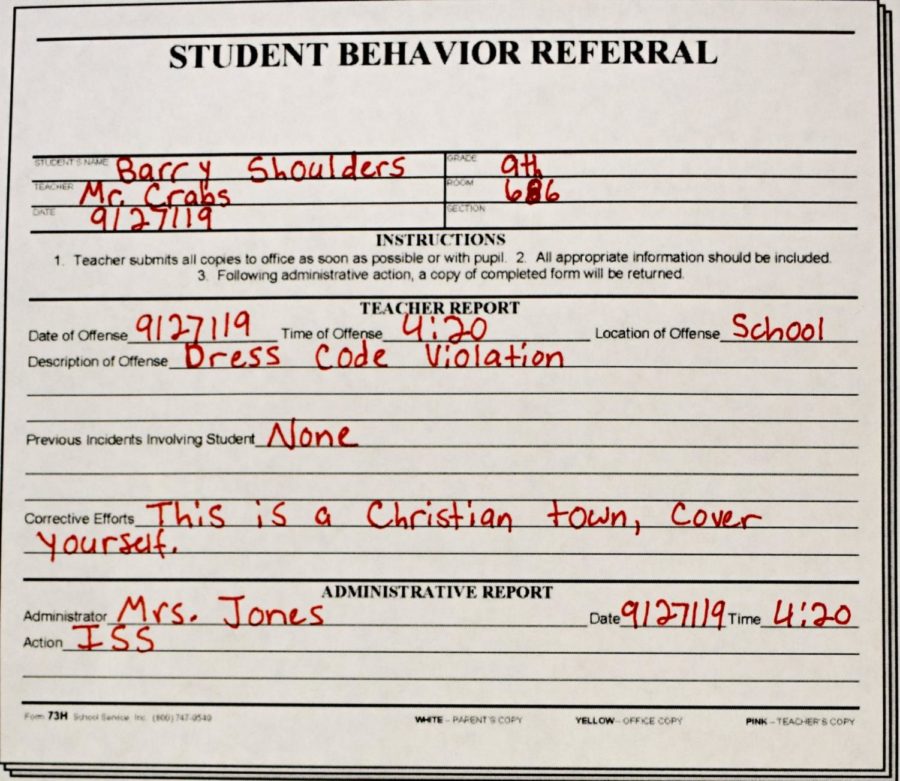The Issues of Dress Codes
October 4, 2019
Dress code. With those simple words, frustration and controversy have arisen among students across the country. A school’s dress code is one of the most debated subjects across America.
Why do we even have a dress code? A dress code law was made in 1969 by the Supreme Court, which states schools are able to limit student expression that could be considered disruptive to the learning environment in schools. Nowadays, most states have laws allowing school boards to limit the expression of students through clothing. But the law was originally created after a school district raised concerns about a group of students who wore black armbands in an attempt to start a protest against the Vietnam war. So why do our schools follow these laws that were made 50 years ago?
Many schools have dress codes to create a safe learning environments for students, and they aim to prepare students for dress codes present in work situations. But not every student will end up working in an environment that requires a dress code. The work force is evolving and opens more options to people than just the standard office job. Instead of teaching us to dress for the future, schools are teaching us how to conform to a set of rules that are outdated and misleading. When students do join the workforce after school, it would be more beneficial for us to have the skill to adapt to the rule enforced by our bosses rather than the mindset that conformity is the only option.
Then there’s the argument that dress codes discriminate against girls. There are certain dress code rules that apply to girls- no excessively exposed shoulder, no bra straps showing- that aim to keep other students from being distracted, mainly the male students. There are also arguments that a dress code prevents sexual harassment and assault, which teaches girls that they need to watch what they wear to prevent harassment rather than teaching the male students how not to harass the female students. This has led to many arguments between administration and students about who the dress code is really protecting.
There are also many schools that implement dress codes for students’ safety. In the aftermath of the shootings that have occurred over the past several years, some schools require students to wear clothing that keeps their belt line visible to ensure students aren’t in possession of guns or weapons. Also, keeping a student’s belt line visible could lead to more conflicts if the shirt is deemed too revealing. This is a logical rule, but there are other measures, such as metal detectors and other safety precautions, that can be taken to create a safe environment in a school than the dress code.
Dress code in schools has become more of an issue than a solution. There are constant conflicts between administrators and students, even parents. Maybe instead of people on both sides of this issue shutting the other down for their opinions, we should be able to have a civilized conversation to address the problems of dress codes.




































